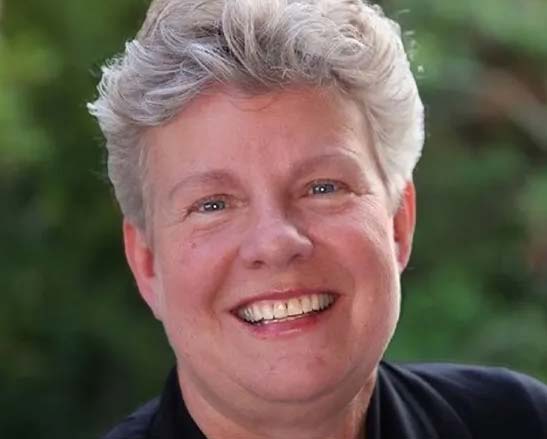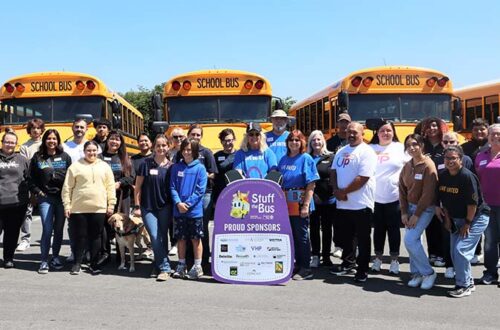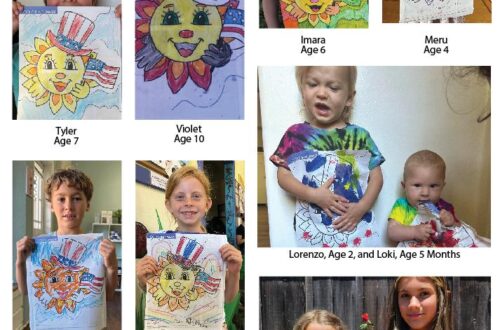
Something You Never Get Over
In early July, I interviewed Dr. Gail Newel, who was retiring from her position as County Health Officer, about her career. We talked about how Santa Cruz had just logged its first official death from “tranq,” an animal sedative called Xylazine that is extremely dangerous for humans.
I knew we’d talk about the opioid epidemic and I suspected what she would say about the causes. But one statement she made brought me up short: Santa Cruz has a bigger problem than most counties in the state and it stems in part from our local culture.
“We have a pretty active glorification of drug culture [in Santa Cruz],” Newel said. “I’m not abstinent myself—I’m not one to say, ‘Just say no.’ But it does make it challenging to message what’s happening with our population and substances.”
Newel made a point of rejecting the outdated attempt to deny that the allure of drugs was real. Those who remember the 1980’s will remember Just Say No coming from Nancy Reagan, hardly a relatable figure to young people, and the image of the frying egg on their television screens. It didn’t work then and it doesn’t work now.
But Newel stops short of saying that it’s OK to do drugs. She has a good reason.
One family’s story
In 2016, Newel and her wife Kelli, also a physician, had an unexpected change in their family. Their son Nyeland, a dentist with a thriving practice and apparently everything to live for, moved back home. The official reason was that he’d just experienced a divorce and needed time back home to transition. But the reality was hidden from his mothers and brother.
Back when he was a student at UCSC, Nyeland tried heroin. It’s the sort of thing that a college student might do, and most would just bounce back and move on with their lives. But Nyeland wasn’t just any college student. Like many in the human population, he inherited genes that made him more susceptible to addiction of any kind. On top of that, his life was timed perfectly to coincide with a cultural wave that he had no control over.
Waves of drug popularity
I would guess that many of us in Santa Cruz County might not be aware of the information that Dr. Newel shared about our statistics. I certainly didn’t realize this. When it comes to hazards related to drugs, both legal and illegal, Santa Cruz is faring badly.
Newel points out that the 1960s ethos of drug use took up firm roots in Santa Cruz, and ever since, as a local culture we’ve been fine with people turning to substances rather than other, often healthier practices to deal with pain, both physical and emotional. That cultural bent has translated to an unusually high rate of opioid-related overdose deaths. Looking at the state map of deaths, you see dark red blotches over sections of the county, especially in Santa Cruz and San Lorenzo Valley.
Recreational drug culture in Santa Cruz County has centered on cannabis for many years. But there has always been an undercurrent of more addictive drugs such as heroin and methamphetamine. Drug use and overdoses came in waves. But then something changed.
From drug wave to drug tsunami
The current epidemic didn’t arise organically in our culture the way that cannabis use did. Newel remembers when she was a practicing physician and modern opioids like OxyContin were being aggressively marketed as “safe” and “non-addictive.”
“I think many of us were skeptical, but it just permeated the whole healthcare culture,” Newel explains.
Soon, the drugs were everywhere. And Nyeland’s body, triggered to want more and more, intersected with his profession as a dentist, where legal opioids were freely accessible.
At first, Nyeland managed his addiction quietly. Though his family knew that he’d had trouble with substance abuse, they assumed the substance was alcohol.
Then the feds asserted control.
“[Nyeland’s story] is the story of many, many people who got addicted to prescription opioids,” Newel explains. “As the DEA started cracking down, then it was impossible to get them mail order in the US and then mail order in Canada. [So Nyeland] turned to China. And when that got harder, he invested in Bitcoin and was buying them on the dark web. And finally, when he was having trouble getting access to opioids that way, he turned to the street.”
The current situation with street drugs in the US is unprecedented. In the past, there were always overdoses, and there were always tainted drugs, and there were always products sold as one drug that actually contained another. It goes without saying that an unregulated black market will have these problems.
But today’s drug market has unique characteristics that Dr. Newel—a mom named Gail who lost her son—wants every parent to understand.
First: the ease of addiction
“We know now that a certain significant fraction of the population, if they’ve taken opioids for five days, they’re already addicted,” Newel explains. “I don’t think we’ve recognized how quickly the addiction can develop in some people.”
Like many teens, my own teen was given a prescription for opioids after he had his wisdom teeth pulled. Recently it occurred to me to take the leftover pills to the pharmacy for safe disposal. When I pulled them out of the medicine cabinet, I was shocked to see that he had been prescribed enough pills to easily start an addiction.
For my kid, graced with genes that helped him shrug off addictive drugs relatively easily, it was no big deal.
But the message here is clear: You don’t know how your teen is going to react. Even a well-meaning doctor can start them on a path toward addiction.
Second: the fun
Let’s face it: a lot of people find opioids extremely pleasurable. And our kids are growing up in Santa Cruz, a county you enter with a billboard advertising a cannabis dispensary. Gail’s son was initially drawn by the fun and ease of access.
“That’s certainly what my son found: They were there. They’re fun,” Gail explains, further pointing out that it was even more convenient for healthcare providers. “They were just in big boxes, easy for him to grab and take home for recreational use.”
Though our teens don’t necessarily have the ease of access that a dentist had, they are growing up in a world distinctly different from our own teen years. You might remember finding out that another teen at your school was a dealer, or you might remember how you found out through the grapevine how to find a dealer.
These days, your teen can buy drugs on TikTok and other social media. Dealers use coded language through emojis that your teen may recognize. Some dealers even feature home delivery.
Third: the danger
As Dr. Newel pointed out, we know that scare tactics don’t work. I know that in my generation, we loved the frying egg commercial—“This is your brain on drugs”—because it was funny. Little did we know that one day, that commercial might be almost literal.
The statistics are staggering. As I wrote in this publication in our February, 2022 issue, what you buy on the street—or through social media, delivered in a cute package to your home—may not contain what’s advertised. A single grain of fentanyl in half a Xanax bought on the street killed Sophie Véniel’s son.
Users are dying or being hospitalized in unprecedented numbers due to drugs laced with other, stronger drugs, drugs that are hundreds of times more potent than expected, and drugs that simply aren’t what the user expected they were buying.
Tranq, the newest kid on the block, causes hideous sores that result in tissue loss and can require amputation as treatment.
What’s a parent to do?
So let’s take stock: Fear mongering didn’t work for us and it won’t work for our kids. Preaching abstinence didn’t work for us and it won’t work for our kids. It sounds like we have an impossible job.
Newel says that it’s of utmost importance—really, a life-or-death matter—that our schools, religious institutions, coaches, and anyone else who works with our kids start to talk to them early. They need to talk not only about the dangers of drugs, but also about the reality that turning to substances is not the only path we can take.
Newel stresses that she knows that this is a hard road.
“The preventative aspect of the opioid epidemic is certainly not decided,” she acknowledges. “But I think most of us can agree that if we can find other ways to be comforted and feel a sense of well-being that we can avoid some of this. So I think practices like meditation and just anything that helps us live more in the moment.”
Newel also suggests that as a culture, we need to reincorporate some understanding that many of us left behind as we advanced into the promise of the modern age. We expected that drugs could be made safe and effective and we were easily duped by the promise of modern opioids.
We watch YouTube videos on meditation and think that it should be easy for us to change our habits and our lives. We see the apparent perfection of other people’s lives on social media and wonder what’s wrong with us that we are still living in some sort of old-fashioned analog imperfection.
“I think it’s important for all of us to understand that life is hard,” Newel explains. “We can’t avoid pain all the time and discomfort, and that’s normal and it’s OK to feel that sometimes.”
She should know. Though it’s been seven years since they lost Nyeland, Newel’s family still grieves. Gail Newel hopes that by telling her story, she can save another parent, another sibling, or another child from experiencing this grief.
“Mothers have been losing their children for all of time, but it’s a horrible grief and something you never get over.”
Suki Wessling is a local writer, teacher, and radio host on KSQD. Subscribe to her podcast, the Babblery, at www.Babblery.com.


You May Also Like

Mama Bear Self Care Back to School
August 2, 2023
Santa Cruz Turns Out to Stuff the Bus
August 2, 2023

